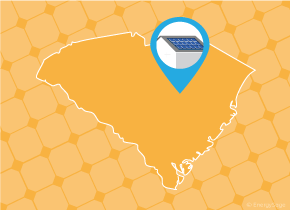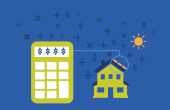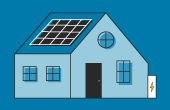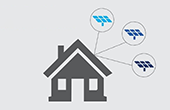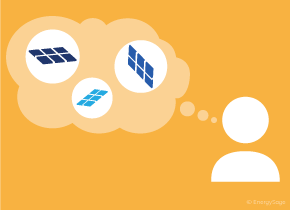History of solar policy in South Carolina
Despite its sunny climate, the Palmetto state is just starting to capture the benefits of their abundant solar resource. Prior to 2016, the state saw very little solar development. As of 2018, though, SEIA reports that the state ranks 18th in the nation in installed solar electric capacity with a total of over 660 megawatts (MW). Considering the solar success of their neighbor North Carolina, it’s easy to imagine the potential growth South Carolina has to offer.
South Carolina got started with solar policy in 2006, with a Solar Energy Tax Credit, nearly three decades later than the first solar policies enacted elsewhere in the country. However, the Tax Credit was a great place to start: the policy grants a 25 percent tax credit for the purchase and installation of a solar system. Soon after, policymakers added more financial incentive investing in solar by implementing the Palmetto Clean Energy (PaCE) Program in 2008. The goal of this initiative is to encourage the use of renewable energy by offering premium payments for electricity generated by customer-owned systems like solar panels. Incidentally, South Carolina similarly modeled this program to the NC GreenPower program in North Carolina, which has achieved considerable success during its lifespan.
Perhaps the most crucial solar policy in South Carolina is the 2014 Distributed Energy Resource Program, which set a renewable portfolio standard (RPS) and paved the way for net metering to begin in 2015.
Nationwide, state energy requirements have been instrumental to the development of clean energy. This is true in South Carolina as well, even though their RPS program ranks only requires utilities to supply 2 percent of their electricity sales from renewable energy by 2021. Of note, though, 1% of the capacity must be generated by facilities sized between 1 MW and 100 MW, while the remaining 1% must be generated by any facility below 1 MW.
For net metering, on the other hand, South Carolina developed a program that rates highly as compared to other states. Net metering is an energy billing system that provides homeowners credit based on how much net excess generation is sent back to the electric grid. In the Palmetto State, utilities have to compensate their customers at the higher retail rate, rather than the lower wholesale or avoided cost rate, helping to significantly reduce ratepayer’s utility bills. Additionally, the proposed 2019 legislation H.B. 3659 may soon increase net metering caps or lift them altogether, making solar even more accessible in the state.
The best solar policies for residents in South Carolina are the solar rebates offered by utilities from 2015 onwards. Utilities that offer these rebates include Duke Energy, SCE&G, and Santee Cooper. For example, Duke Energy will pay a $1.00 rebate for every watt (W) of solar power installed for either residential or commercial purposes. For an average 6-kilowatt (kW) system, that’s an extra $6,000 in to help cover the cost of going solar. Residents should look to take advantage of these rebates soon though because Duke Energy has an expiration date of 2020 and it’s unclear how much longer the other programs will last.
